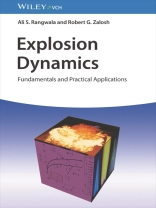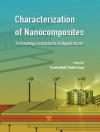Eine strukturierte und umfassende Einführung in die Explosionsdynamik mit Fallstudien und Arbeitsbeispielen.
Das E-Book Explosion Dynamics wird angeboten von Wiley-VCH Gmb H und wurde mit folgenden Begriffen kategorisiert:
Chemical Engineering, Chemie, Chemische Verfahrenstechnik, Chemistry, Explosion, Explosiv- und Treibstoffe, Explosives and Propellants, Maschinenbau, Mechanical Engineering, Process Safety, Prozesssicherheit, Thermodynamics, Thermodynamik
Tabela de Conteúdo
Chapter 1: Introduction and Basic Concepts
Chapter 2: Explosion Pressure
Chapter 3: Pressure Rise as a Function of Time
Chapter 4: Impact of Pressure on a Structure
Chapter 5: Deflagrations with Dusts and Mists
Chapter 6: Detonations
Chapter 7: Flame Instabilities and Turbulent Flame Propagation
Chapter 8: Explosion Venting
Chapter 9: Explosion Suppression
Chapter 10: Examples of Explosions: A Few Case Studies
Sobre o autor
Ali Rangwala is Professor in Fire Protection Engineering at the Worcester Polytechnic Institute (WPI). He also holds joint appointments as a Professor in the Department of Mechanical Engineering and Chemical Engineering at WPI. Professor Rangwala serves on the Fire Safety Journal editorial board, the scientific advisory board for the Fire and Explosion Hazard International Conference, and NASA?s Biological and Physical Sciences (BPAC) Advisory Committee. Professor Rangwala?s research interests include problems related to industrial fire and explosion problems. He has worked on topics such as the deflagration of combustible dust clouds, ignition behavior of combustible dust layers, in-situ waste burning, velocity measuring techniques in chemically reacting flows, and flame propagation and burning rate behavior of condensed fuel surfaces. He is a recipient of the IAFSS Best Thesis Award (2006), the NSF Career Award (2008), and the Sigma Xi senior faculty research award (2017). He is a member of the National Fire Protection Association Technical Committee on Fundamentals of Dust Explosion.
Bob Zalosh has been a WPI Professor Emeritus of Fire Protection Engineering (FPE) since retiring from his position as FPE Professor in 2006. Professor Zalosh is a member of several National Fire Protection Association Technical Committees responsible for developing and revising consensus fire and explosion protection standards. He has authored several NFPA and Society of Fire Protection Engineering Handbook chapters and numerous journal articles. He serves on the U.S. Department of Energy Hydrogen Safety Panel and the Underwriters Laboratories Fire Council. He is the author of a textbook on Industrial Fire Protection Engineering published by John Wiley & Sons.
Professor Zalosh has consulted for various clients on industrial fire and explosion protection issues at manufacturing facilities that handle flammable gases, liquids, and combustible dust and powders. He has also investigated numerous fire and explosion incidents and has served as an expert witness in the litigation arising from those incidents. He has assisted the Occupational Safety and Health Administration (OSHA) in supporting negotiations with companies that have received citations for combustible dust hazard violations and provided pro bono consulting to the Boston Fire Department and the New York City Fire Department on special fire hazards and fire incident investigations.
Before joining the WPI faculty, Dr. Zalosh worked for 15 years at Factory Mutual Research Corporation (FMRC), where he held several positions, including the Manager of the Applied Research Department. While at FMRC, Dr. Zalosh conducted and managed fire and explosion research programs internally funded and funded by contracts with federal agencies, private companies, and trade associations. Several research projects led to advances in fire and explosion protection technology used today in various industrial facilities.
Professor Zalosh and Professor Rangwala have worked together on a research contract from ASTM involving fire and explosion hazards associated with portable gasoline containers. The work led to the development of flame arresters to prevent flame propagation into those containers and an ASTM standard apparatus related to the testing of flame mitigation devices.












